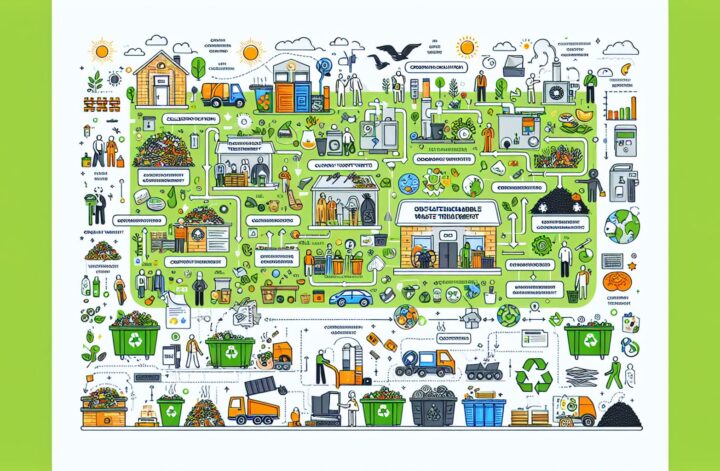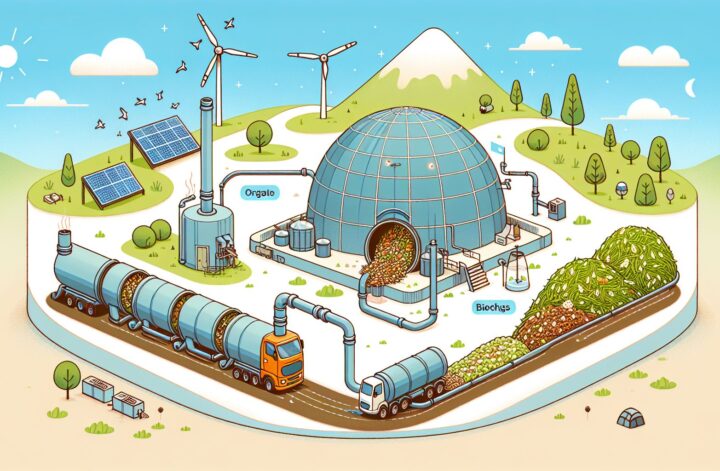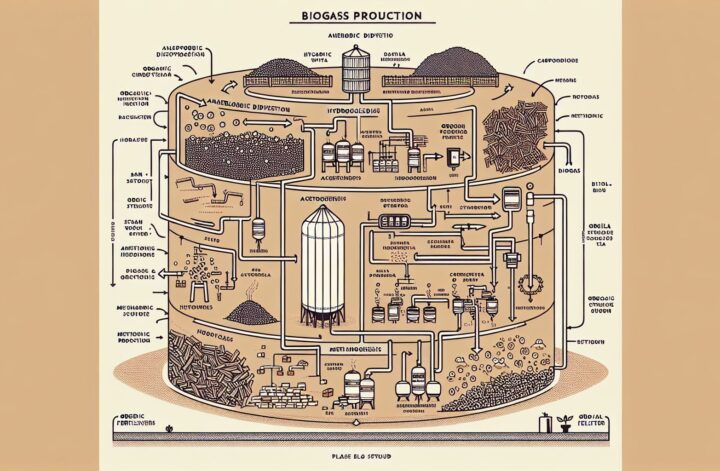As it becomes increasingly evident that sustainable solutions are necessary to combat climate change, the methods of organic waste treatment are earning due attention. By transforming organic waste into refined products with practical applications, these methods offer a promising way to reduce greenhouse gas emissions and divert waste materials from landfills.
Organic Waste Treatment Explained
Organic waste treatment mainly encompasses the processes that transform organic waste, such as food scraps, yard waste, and paper products, into usable end products. One of the most notable procedures employed in this field is Anaerobic Digestion (AD), a biological process that decomposes organic waste via bacteria in the absence of oxygen, creating biogas, a mixture of methane, carbon dioxide, and trace elements[^1^].
The Anaerobic Digestion Process
Anaerobic digestion involves four main stages: hydrolysis, acidogenesis, acetogenesis, and methanogenesis.
Hydrolysis initiates the process by breaking down complex organic materials into simpler soluble molecules, such as sugars, amino acids, and fatty acids.
Acidogenesis sees acidogenic bacteria metabolize the byproducts from hydrolysis into volatile fatty acids and other compounds, including ammonia, hydrogen, and carbon dioxide.
Acetogenesis further breaks down the products of acidogenesis into Acetic acid, hydrogen, and carbon dioxide.
Finally, during methanogenesis, methane-forming bacteria metabolize the products from acetogenesis into methane, carbon dioxide, and water[^2^].
Benefits of Organic Waste Treatment
There are multiple ways that society can benefit from organic waste treatment, which are outlined below:
Biosolids Production
A significant byproduct of anaerobic digestion is the biosolids left in the digester after the completion of the process. Often referred to as digestate, these biosolids are rich in nutrients and organic matter, making them a valuable product for soil amendment and land reclamation[^3^].
Biogas Production
Besides digestate, another primary end product of anaerobic digestion is biogas, a mixture of methane and carbon dioxide, with traces of other gases. Because methane is a powerful greenhouse gas, its capture and use as a renewable energy source significantly reduce greenhouse gas emissions. Biogas can generate heat and electricity, thus enabling industry and households to reduce reliance on fossil fuels.
Sludge Stabilization
The anaerobic digestion process aids in the stabilization of sewage sludge, making it safer and more manageable for disposal or recycling.
Co-Digestion
Co-digestion is the processing of multiple organic waste streams together, which often leads to an increase in biogas yield compared to digestion of a single waste stream. Maximizing the potential for renewable energy production[^3^].
Superior Waste Management
Organic waste treatment provides a more sustainable method for waste disposal than traditional landfilling, reducing the impact on the environment and opening opportunities for the reuse of waste materials.
Challenges and Future Directions
While there are many benefits of organic waste treatment, it’s also necessary to recognize the challenges involved. These include controlling the conditions within the anaerobic digester to maintain optimal microbial activity, managing trace element supplementation to support bacterial metabolism, and preventing any potential inhibition of digestion due to compounds such as ammonia or sulfides.
It is also crucial to continue the research and development of technologies that increase the efficiency of organic waste treatment processes and the usability of its end products. Biogas upgrading, for example, is a process that can purify the methane in biogas to make it equivalent to natural gas, making it a more versatile and valuable resource[^2^].
In conclusion, organic waste treatment plays a significant role in addressing the global waste problem and combating climate change, and it should be promoted as part of a sustainable future.
References:
[^1^]: U.S Environmental Protection Agency. (2021). Anaerobic Digestion. Link
[^2^]: Anaerobic Digestion.org.uk. (n.d). The AD Process. Link
[^3^]: U.S Department of Energy. (2013). Biogas Potential in the United States. Link
[^4^]: Waste Management World. (2019). Why is Biogas Upgrading Important? Link




